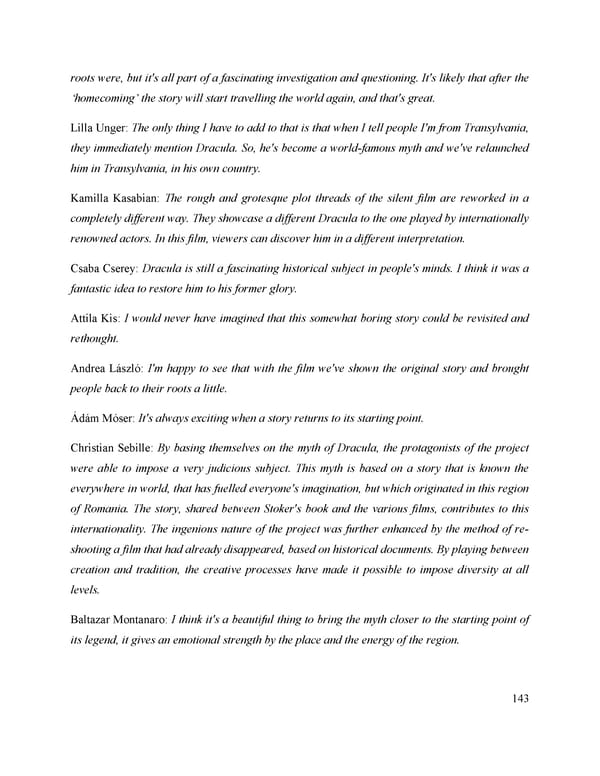roots were, but it's all part of a fascinating investigation and questioning. It's likely that after the ‘homecoming’ the story will start travelling the world again, and that's great. Lilla Unger: The only thing I have to add to that is that when I tell people I'm from Transylvania, they immediately mention Dracula. So, he's become a world-famous myth and we've relaunched him in Transylvania, in his own country. Kamilla Kasabian: The rough and grotesque plot threads of the silent film are reworked in a completely different way. They showcase a different Dracula to the one played by internationally renowned actors. In this film, viewers can discover him in a different interpretation. Csaba Cserey: Dracula is still a fascinating historical subject in people's minds. I think it was a fantastic idea to restore him to his former glory. Attila Kis: I would never have imagined that this somewhat boring story could be revisited and rethought. Andrea László: I'm happy to see that with the film we've shown the original story and brought people back to their roots a little. Ádám Móser: It's always exciting when a story returns to its starting point. Christian Sebille: By basing themselves on the myth of Dracula, the protagonists of the project were able to impose a very judicious subject. This myth is based on a story that is known the everywhere in world, that has fuelled everyone's imagination, but which originated in this region of Romania. The story, shared between Stoker's book and the various films, contributes to this internationality. The ingenious nature of the project was further enhanced by the method of re- shooting a film that had already disappeared, based on historical documents. By playing between creation and tradition, the creative processes have made it possible to impose diversity at all levels. Baltazar Montanaro: I think it's a beautiful thing to bring the myth closer to the starting point of its legend, it gives an emotional strength by the place and the energy of the region. 143
 Lost Analogue: Exploring Film, Music, and Interdisciplinary Methods in Education Page 143 Page 145
Lost Analogue: Exploring Film, Music, and Interdisciplinary Methods in Education Page 143 Page 145